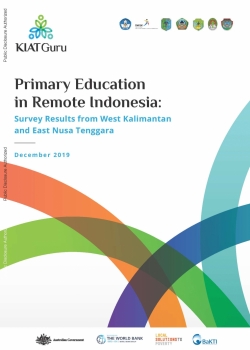
Competitiveness in an increasingly globalized world requires a highly skilled and educated workforce. The Government of Indonesia recognizes that a highly educated and skilled workforce is critical to reducing inequality and poverty. To ensure schools are given adequate attention, the 2003 Law 20 on National Education System mandates that 20 percent of national and district government budgets is for education. This target was achieved in 2009 and has continued thereafter. Indonesia has made considerable progress in achieving universal enrollment at the primary and secondary school levels. The Government's attention to education through its policies as well as the two decades favorable economic growth has enabled gross enrollment at the primary school levels at about 100 percent, with gross enrollment at the secondary school levels increasing from 55 to more than 86 percent. Paradoxically, despite success in education enrollment, Indonesian students have low learning outcomes, particularly in rural and remote areas of the country. Findings show that years of education and enrollment figures do not correlate with the quality of education provided. In other words, "schooling ain't learning" (Pritchett 2013; World Bank 2018a). In all international assessments (such as the PISA, TIMSS, and PIRLS), Indonesian students rank bottom among all countries assessed (Hanushek and Woessmann 2007; OECD 2017; World Bank 2017). Over the past 20 years, Indonesian student learning outcomes have tended to remain flat (OECD 2017; Beatty et al. 2018). In addition, studies show that primary and secondary schools located in rural and remote areas have substantially lower learning outcomes compared with their urban counterparts (Stern and Nordstrum 2014; BPS 2017; Beatty et al.2018)
-

- Log in to post comments